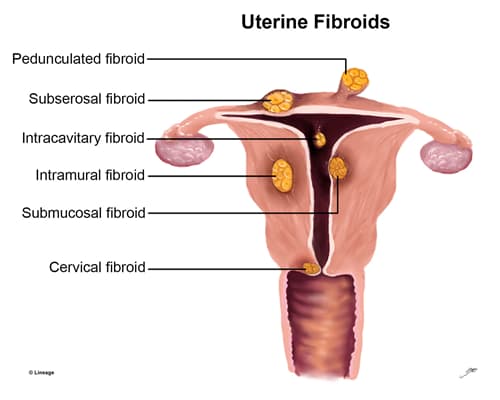Snapshot

- A 30-year-old African American G0P0 with no significant past medical history presents with chronic pelvic pain. She denies any other symptoms. Physical exam reveals a mobile uterus that is nontender with multiple discrete nodules. A transvaginal ultrasound shows hyperechoic masses within the uteruine myometrium. She decides to undergo a myomectomy that will preserve her ability to bear children.
Overview

Introduction
- Otherwise known as fibroids
- Leiomyomas are smooth muscle growths of the uterine myometrium
- Epidemiology (most common)
- benign uterine tumor
- tumor in females
- seen in African Americans (5x more common)
- occurs in women 20-40 years of age
- Often present with multiple discrete tumors
Presentation

- Symptoms
- sensitive to estrogen levels
- tumor growth and increased symptoms during pregnancy
- decreased symptoms during menopause
- sensitive to estrogen levels
- Physical exam
- uterus is
- enlarged
- firm
- asymmetric
- nontender
- uterus is
- multiple tumors
Evaluation
- Diagnose with clinical history and exam
- Confirm with sonogram
- transvaginal ultrasound has high sensitivity (95-100%)
- hyperechoic, well-circumscribed round masses
- Labs
- β-hCG to rule out pregnancy
- Histology
- whorled pattern of smooth muscle bundles
Differential Diagnosis
Treatment
- If asymptomatic
- observation
- fibroids can shrink substantially postpartum and after menopause
- observation
- If symptomatic
- premenopausal
- OCPs
- NSAIDs
- myomectomy
- postmenopausal
- myomectomy
- premenopausal
- hysterectomy
Prognosis, Prevention, and Complications
- Prognosis
- having symptomatic fibroids decreases quality of life
- Complications
- very rarely (if at all) transforms into leiomyosarcoma
- infertility



